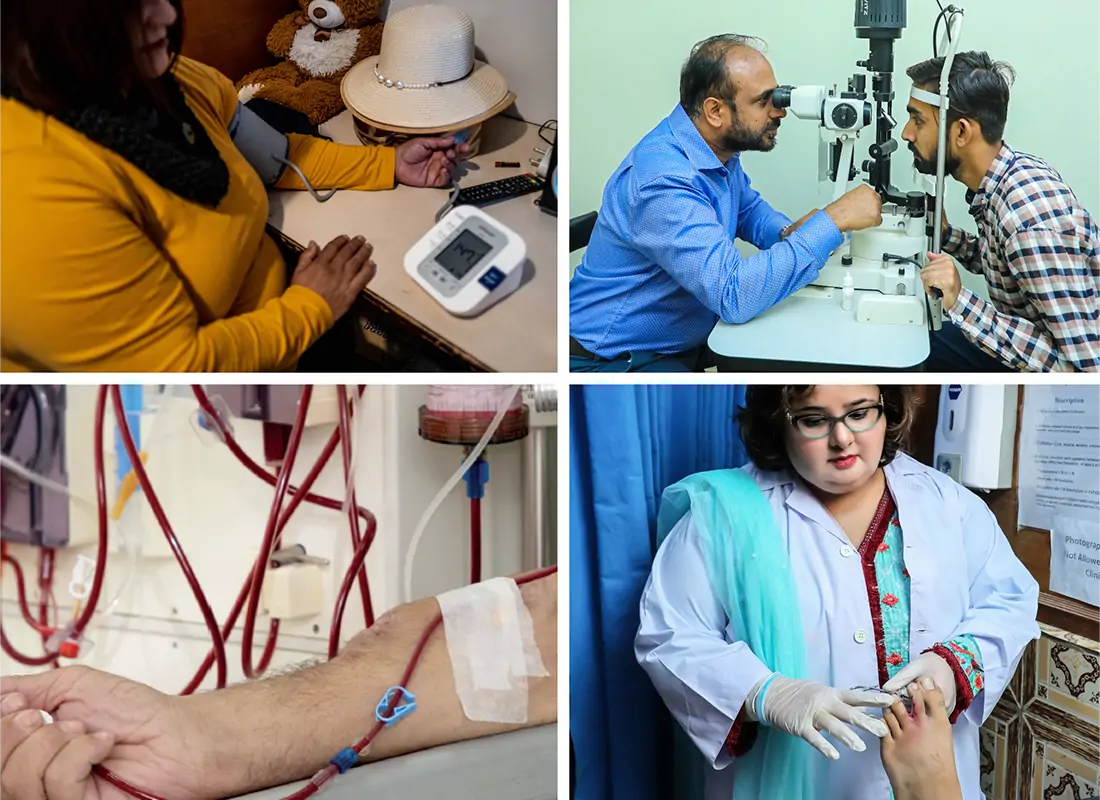People living with diabetes have an increased risk of developing diabetes complications. The most common are those that affect the heart, blood vessels, eyes, kidneys, nerves, teeth and gums.
In high-income countries, diabetes is a leading cause of cardiovascular disease, blindness, kidney failure and lower limb amputation. Managing blood glucose, blood pressure and cholesterol levels can delay or prevent complications. Regular monitoring of these signs is therefore essential for people with diabetes.

- People living with diabetes are up to three times more likely to develop cardiovascular disease.
- 1 in 3 people with diabetes will develop some form of vision loss during their lifetime.
- Kidney failure is 10 times more common in people with diabetes.
- A lower limb is lost to diabetes somewhere in the world every 30 seconds.








